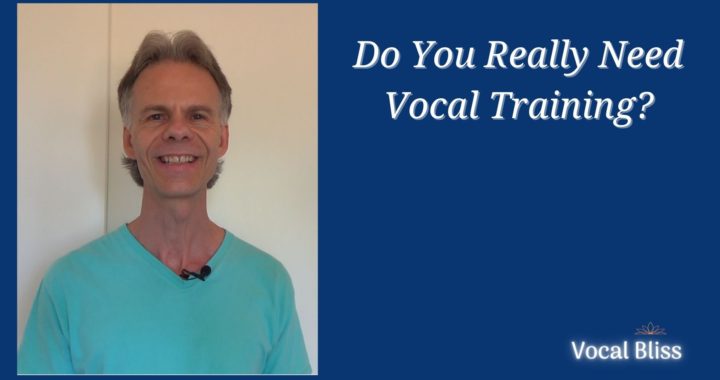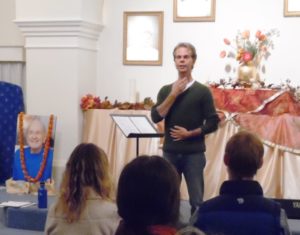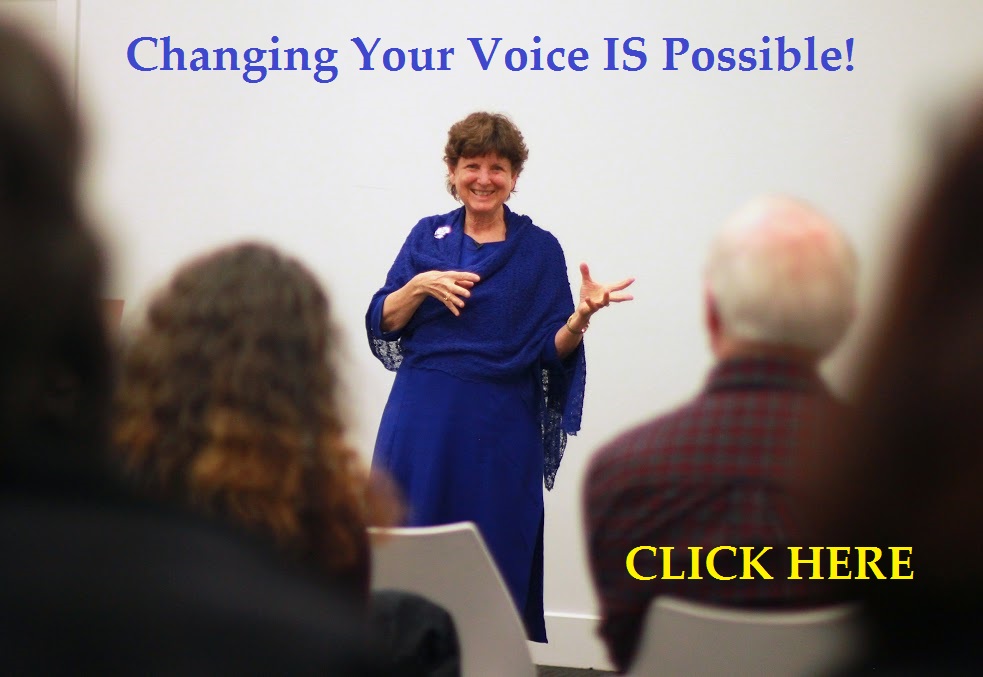Over the last couple of months we’ve been working with our choir on Christmas music. The Christmas concert is one of the highlights of Holiday Season here at Ananda Village where we live, and a lot of energy and many hours of rehearsal go into it.
This is also the only concert throughout the year where we don’t perform only Ananda music, but we branch out to other music, especially Haendel’s Messiah. For those of you who might not be familiar with it, the Messiah is a monumental masterpiece that tells the story of Christ’s life in music. We usually perform only two or three songs from it, and people love it.
Unlike most Ananda music, which we’re used to performing, the Messiah songs are more challenging, vocally. There are more high notes, rhythmically challenging phrases, and the choir is often required to sing forte (loud) for extended periods of time. For this reason, we spent a lot of our warm-up time working on how to project the voice without strain. What’s the difference between projecting and pushing one’s voice? Is it possible to sing loud and project the sound without pushing?
Projecting the voice implies good placement. You place the voice correctly – which means that your sound is full, resonant, but relaxed – and then increase the air pressure by actively engaging your abdominal and diaphragmatic muscles to support the air flow. No extra tension should be placed on the throat by squeezing or tensing it. If the voice is not placed correctly, however, and you increase the air pressure, you will still get a louder sound, but because of the lack of a stable placement, the sound won’t be pure and you will have to tense or squeeze the throat to adjust it.
It’s like a radio that is not perfectly tuned to a radio station. You hear some music along with static. If you want to hear the music better you can either increase the volume (=pushing), or fine tune the radio to the radio station, until all the static is gone (projecting through correct placement).
Long Tones Exercise
One of the best ways I know to improve the quality of your sound is to practice long tones:
Pick a low note in your range that you can hit easily and sing any vowel (ee, ay, aah, oh, oo); hold the note long enough to give yourself time to gradually relax your throat more and more as you keep singing.
Experiment with how much you can relax and still be singing. If you relax too much, your voice will sound weak and “breathy”.
Practice with different vowels and different notes; go up a half step at a time and repeat the same procedure.
As you hold your notes and relax, you might notice that your voice will wobble a little. This happens because you’re gradually releasing tension from your throat and relying more on your diaphragm for support (this is supposed to happen).
Practice this exercise in different areas of your range.
In general: don’t try to sing very loud until your vocal placement is really good. When your sound stays consistently full and resonant, whether you’re singing high or low, softer or louder, then you’re ready to work on “turning up the volume”. As you do so, make sure to not tense your throat, but work with increasing the pressure from your belly muscles.

 A few years ago I read a quote from a great musician and composer of the 18th century whose name escapes me. He said “Those who don’t do too much, aren’t doing enough.” Even though I couldn’t figure out why, I remember feeling that he was wrong. Too much is simply too much!
A few years ago I read a quote from a great musician and composer of the 18th century whose name escapes me. He said “Those who don’t do too much, aren’t doing enough.” Even though I couldn’t figure out why, I remember feeling that he was wrong. Too much is simply too much!
 In 2007 I was hired as a music teacher at a spiritually-oriented, alternative college. I enjoyed teaching there; the class was small – around ten students – and they all seemed special people to me. They were exceptionally centered and wise, especially for their age.
In 2007 I was hired as a music teacher at a spiritually-oriented, alternative college. I enjoyed teaching there; the class was small – around ten students – and they all seemed special people to me. They were exceptionally centered and wise, especially for their age. Have you ever tried to cover the hole of a guitar’s sounding board and then play it? Did you notice what happens? The sound, usually resonant and rich, becomes thin and barely audible. This exactly describes what happens to speakers who haven’t learned to use their natural “voice amplifiers”: their voice sounds thin and weak, and when they talk to a big group or in a large room, they end up straining their voice in order to be heard.
Have you ever tried to cover the hole of a guitar’s sounding board and then play it? Did you notice what happens? The sound, usually resonant and rich, becomes thin and barely audible. This exactly describes what happens to speakers who haven’t learned to use their natural “voice amplifiers”: their voice sounds thin and weak, and when they talk to a big group or in a large room, they end up straining their voice in order to be heard. “I don’t like the sound of my voice, especially on a recording”
“I don’t like the sound of my voice, especially on a recording”
 by Ramesha Nani
by Ramesha Nani